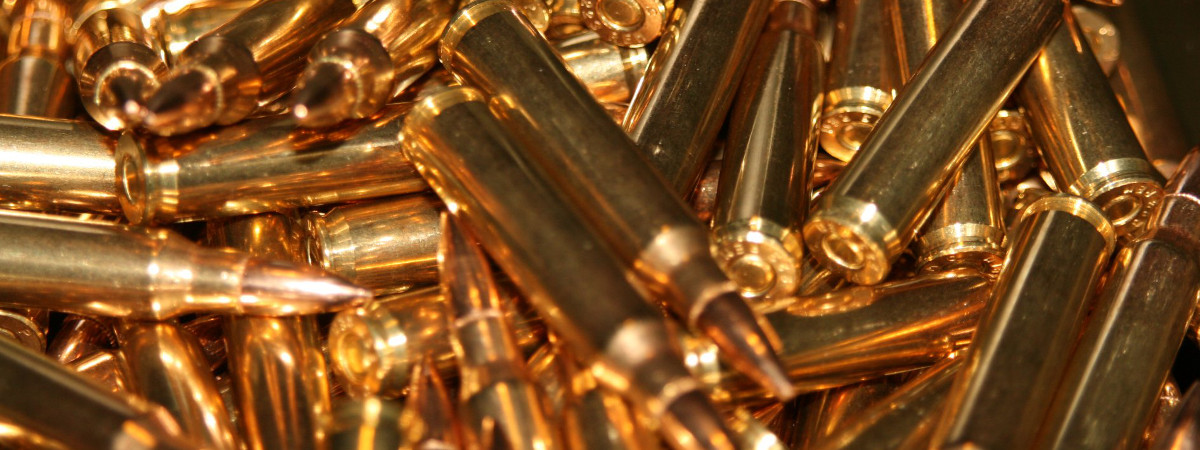Commence the squeeing – I’ve got my own H&K MP7 PDW.
Scouting New Land
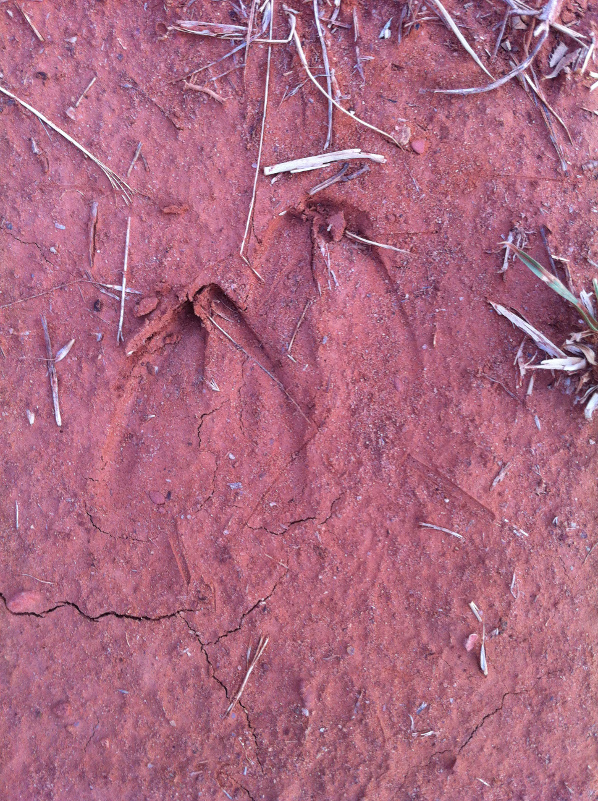 |
It’s critically important to know the land you hunt. A while back I wrote about a hunt I went on with a close friend of mine. We were pursuing feral hogs in Northeast Texas, but a severe drought had significantly altered their range. Areas that were normally lush and wet, perfect hog territory, were now dry.
I knew the importance of scouting the land, but neglected to take into consideration the difference that changes in weather patterns would make. This year I’m not making that same mistake.
Many large game species change their habits significantly with the seasons, and once again we’ve seen an abnormally dry summer in the areas I plan on hunting. I took the time this week to scout out a few areas to see how the patterns had changed.
True to form, areas where water normally flowed that were now dry were devoid of tracks. Deer, hog, and turkey alike were tending to stick to flowing creeks and rivers, larger ponds and lakes, and areas with human activity where they might find irrigated crops or livestock ponds and waterholes.
Game trails that had been frequently used in years past were now overgrown and devoid of fresh scat, hair, tracks, and other indications of recent use. In a few areas in the river bottoms however new game trails were in evidence along with numerous tracks and other signs.
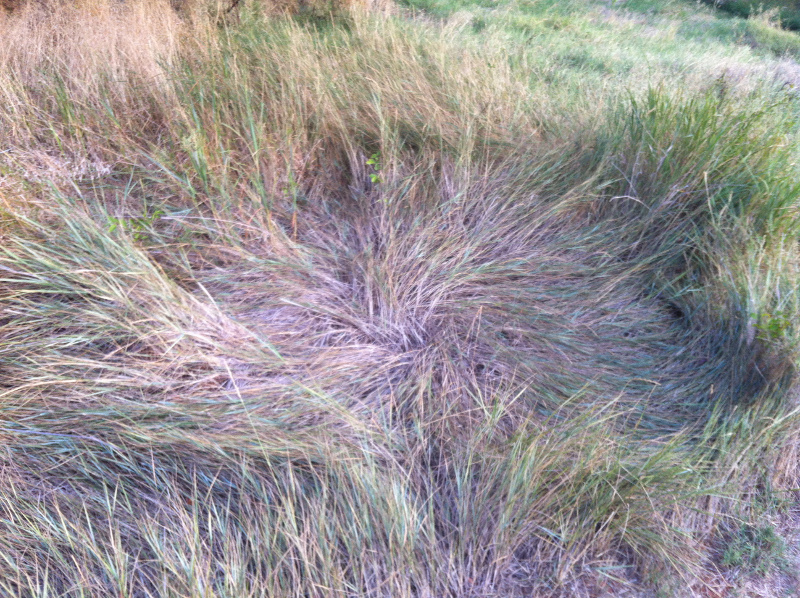 |
With forbs and grasses in short supply, the local deer and hogs had been raiding nearby irrigated fields and even sharing stock tanks with some cattle. This change from their habits when food and water is abundant necessitated some alteration of the normal paths they took to and from their bedding areas. After a bit of work checking out the new paths, I figured out the daily activity of the deer and narrowed down where I thought they bedded down during the day.
Now that I had patterned the deer, it was time to start looking for likely areas for scrapes. Though it is still too early for the rut for deer to begin actively visiting scrapes, most bucks will be scraping the velvet from their fresh grown antlers and trees near game trails and other areas showing recent deer activity will soon bear signs of rubbing.
If you’re scouting the land for the upcoming deer season and are having trouble finding signs of activity, try searching along the banks of rivers and creeks that are still running, or walk along the areas between forests and fields. Transition zones such as these are favored by deer. Often you will be able to spot a game trail crossing a small stream or entering dense woods on the edge of a field.
Look for natural funnels in the landscape. Deer won’t generally walk along ridgelines or cross over hilltops. Instead, they tend to follow the easier paths along the same elevation. If there is a draw or valley, check for activity in the bottomlands.
Don’t forget that once the season starts deer will usually change their patterns. Once the crops are harvested and humans once again make their presence known at the trailheads, it’s like a switch is flipped and deer completely alter their routine. These habits can evolve further as the rut begins. If you spot a scrape this early in the rut, go ahead and mark it on your GPS or identify a landmark so that you can find it later. Deer will often use the same scrapes year after year, so even if it looks old and disused it will likely draw attention from eager bucks, and does in estrus, as the rut begins to peak.
Next week we’ll go over more of the changes that deer go through as autumn begins in earnest, and talk about how to change your strategy to find that big buck you’ve been seeing all summer that has up and disappeared with the first hint of cooler weather.
 Don’t Forget: This month is Kilted to Kick Cancer month
Don’t Forget: This month is Kilted to Kick Cancer month
We’re raising money to help promote prostate and testicular cancer awareness and to help find a cure for this devastating disease. Our goal is to raise $50,000 inside of 30 days, and we need your help! It doesn’t have to be much – a donation of only $10 can go a very long way – so help us in our cause and give what you can using the link below.
Click HERE to help prevent testicular and prostate cancer through Kilted to Kick Cancer
Kilted to Kick Cancer
 This Saturday marks the kickoff for the annual Kilted to Kick Cancer fundraiser. The goal this year is to raise $50,000 to support research aimed at finding a cure to prostate cancer. All through the month of September, participants in our fundraiser will be wearing kilts in order to draw attention to our cause.
This Saturday marks the kickoff for the annual Kilted to Kick Cancer fundraiser. The goal this year is to raise $50,000 to support research aimed at finding a cure to prostate cancer. All through the month of September, participants in our fundraiser will be wearing kilts in order to draw attention to our cause.
This will make things interesting for me, since I’ll be out hunting for much of this month. I’m not sure how well a kilt will hold up in the woods and grasslands, but it worked for the Scottish Highlanders. Being part Scottish and bearing that surname myself, I suppose I’ll have to do my family heritage proud.
How can you help?
Dig deep and hit the link below. Give what you can with the knowledge that every dime will go to the LiveStrong foundation and help to support their efforts to eradicate this disease that affects nearly a quarter million men every year in the United States alone.
Click HERE to help prevent testicular and prostate cancer through Kilted to Kick Cancer
More Hunters Heading Afield
A recent study by the US Fish & Wildlife Service shows the first overall increase in hunters in more than a decade. Special interest groups supporting hunters and outdoorsmen have been lamenting the decline of our various sports and activities for years.
A groundswell of support encouraging hunters to support local outdoor youth activities has apparently begun to pay off.
In 2011 90.1 million Americans, 38% of the U.S. population 16 years old and older, enjoyed some form of fishing, hunting or wildlife-associated recreation. Outdoor recreation is a huge contributor to our nation’s economy.
Expenditures by hunters, anglers and wildlife-recreationists were $145.0 billion. This equates to 1% of gross domestic product; meaning one out of every one hundred dollars of all goods and services produced in the U.S. is due to wildlife related recreation.
Almost 37.4 million Americans participated in fishing, hunting or both sports in 2011. These sportsmen and women spent $43.2 billion on equipment, $32.2 billion on trips, and $14.6 billion on licenses and fees, membership dues and contributions, land leasing and ownership, and plantings for hunting. On average, each sportsperson spent $2,407 in 2011.
In 2011 13.7 million people, 6% of the U.S. population 16 years old and older, went hunting. Hunters in the U.S. spent an average of 21 days pursuing wild game. Big game like elk, deer and wild turkey attracted 11.6 million hunters (85%) who spent 212 million days afield. Over 4.5 million (33%) pursued small game including squirrels, rabbits, quails, and pheasants on 51 million days. Migratory birds, such as geese, ducks and doves, attracted 2.6 million hunters (19%) who spent 23 million days hunting. Hunting for other animals such as coyotes, groundhogs and raccoons attracted 2.2 million hunters (16%) who spent 34 million days afield.
Hunters spent $34.0 billion on trips, equipment, licenses, and other items to support their hunting activities in 2011. The average expenditure per hunter was $2,484. Total trip-related expenditures comprised 31% of all spending at $10.4 billion. Other expenditures, such as licenses, stamps, land leasing and ownership, and plantings totaled $9.6 billion, 28% of all spending. Spending on equipment such as guns, camping equipment, and 4-wheel drives comprised 41% of spending with $14.0 billion.
Overall hunting participation increased 9% from 2006 to 2011. The numbers of big game hunters rose 8%, migratory bird hunters increased 13%, and hunters seeking other animals increased by 92%. The number of small game hunters declined 6%, which is not statistically significant.
Total hunting-related spending increased between 2006 and 2011. There was a 30% increase over the five-year period. Purchases of hunting equipment such as guns, decoys, and ammunition increased 29%. The category with the biggest increase was land leasing and ownership with 50%. Trip-related spending was up 39%.
The 10-year comparison of the 2001 and 2011 Surveys shows an increase in both the number of hunters and their expenditures. Overall participation was up 5% over the time period. Big game hunting increased 6%. Small game and migratory bird hunting had declines of 17% and 13%, respectively. Other animal hunting increased 107%. Total hunting expenditures increased 27%. Expenditures for hunting equipment, such as firearms, ammunition, and archery equipment, increased 33%.
With more than 90.1 million Americans 16 years of age and older participating in 2011, wildlife-related recreation is clearly an important leisure activity in the U.S. An average of nearly four out of ten people you meet will participate in some type of wildlife recreation. By comparison, there were 36 million recreational runners in 2009.
Wildlife recreation is not only an important leisure activity but it is also a catalyst for economic growth. Hunters, anglers and wildlife watchers spent $145.0 billion on wildlife-related recreation in 2011. This spending contributed to local economies throughout the country, which added to employment, raised economic output, and generated tax revenue.
Retain Your Harvest For Later – Pickle Some Cucumbers
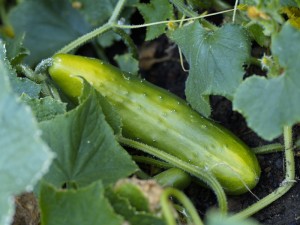
Once a cucumber is picked from the vine, it’s “use it or lose it” and pickling is one of the best ways to “use” a cucumber and still be able to enjoy it later!
What you will need:
5 or 6 medium cucumbers
3 onions
3/4 cup salt
3 cups vinegar
3 cups ice
1-1/2 teaspoons celery seed
1-1/2 teaspoons mustard seed
2-1/4 cups sugar
3 tablespoons finely grated fresh ginger
1-1/2 teaspoons turmeric
Two clean quart jars with lids
Canning pot tall enough to allow the jars to be submerged in water
Canning rack (optional, but very helpful)
Jar lifting tool or tongs sturdy enough to lift the filled and heated jars (you can do without these if you have a canning rack, but to be honest the tongs are the easier method to use)
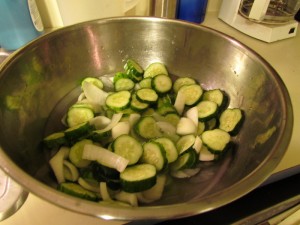 Begin by washing and slicing the cucumbers. Place them in a bowl, slice the onions, and add them to the bowl. Sprinkle the cucumbers and onions with salt and then cover them with ice. Allow the bowl to stand while the ice melts, approximately 2-1/2 or 3 hours.
Begin by washing and slicing the cucumbers. Place them in a bowl, slice the onions, and add them to the bowl. Sprinkle the cucumbers and onions with salt and then cover them with ice. Allow the bowl to stand while the ice melts, approximately 2-1/2 or 3 hours.
Drain the melted ice off the cucumbers and onions and place them in a pan for cooking. Add the spices, vinegar and sugar, then heat just to boiling. It is a good idea to place the clean jars in the oven at 250 degrees while the cucumber mixture is heating up. Having the jars hot helps to ensure that they are sterilized as well as to prevent a temperature contrast between jar and pickles when filling.
Turn the heat off and spoon the cucumbers, onions and juice into the clean jars. Pickles should have one-half inch of air space between the top of the pickle and juice mixture and the lid. Wipe the rims of the jars off with a clean damp paper towel and put the lids on the jars. It is often helpful to tighten the rim, then loosen it a quarter-turn in order to make sure air can escape.
Fill the canning pot one-half to two-thirds full with water and heat to boiling. Fill a teapot or sauce pan with water and heat it as well in case you need additional water to cover the jars. When the water is boiling, place the filled jars in the boiling water, making sure they are submerged. Boil the filled jars for 15 minutes. Use a jar lifting utensil or tongs to remove the jars from the canning bath. Allow the jars to cool.
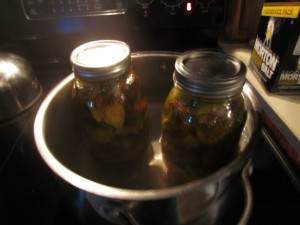 Check the lids to ensure they have sealed and that there is now a concave shape and no pop or movement when the lid is pressed.
Check the lids to ensure they have sealed and that there is now a concave shape and no pop or movement when the lid is pressed.
Smile and enjoy the fruits of your harvest and the sweet crisp flavor of your new-found food preservation skills.
Archery Bleg
So, I haven’t fired a bow in about 15 years. I’ve long since sold off all of my archery hunting gear, but this year I’ve made the decision to get back into it for deer and pronghorn archery seasons.
What gear and brands should I look for and what should I avoid?
Any other advice for someone getting back into it?
Robb Allen Brings the Funny
Inspired by Tam, Robb has posted an American’s guide to British Terminology.

Click to embiggen
Maglite Warranty Service
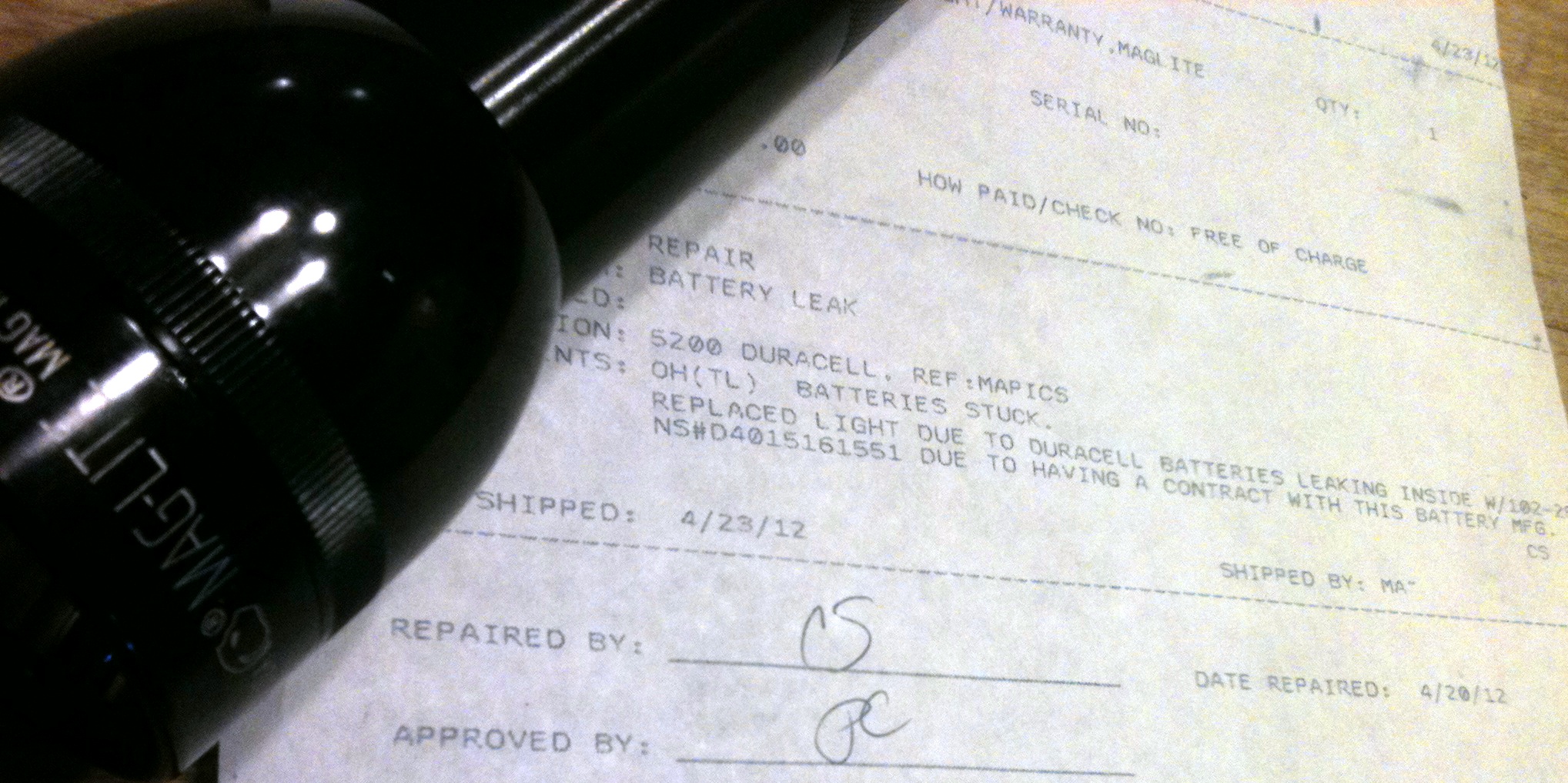 They’re probably the most easily recognizable flashlights in the world. Among security and law enforcement professionals, they are ubiquitous. Available in a variety of sizes, from single AAA to 2 D-cell and on up to 6 D-cells, Maglite flashlights are easily the most popular in the world. And with good reason.
They’re probably the most easily recognizable flashlights in the world. Among security and law enforcement professionals, they are ubiquitous. Available in a variety of sizes, from single AAA to 2 D-cell and on up to 6 D-cells, Maglite flashlights are easily the most popular in the world. And with good reason.
The solid aluminum body is tough, and most Mag-Lite models are water resistant. Modern versions incorporate the latest in LED and xenon bulb technology. All of this is backed-up by Maglite’s 100% guarantee that, should their product fail, they will repair or replace it.
A few weeks ago, out in the high deserts of New Mexico in the middle of the night, I reached behind the passenger seat of my pickup truck and grabbed my 4-cell Maglite. When I hit the switch to turn on the flashlight I was disappointed to find that it did not turn on.
“No worries,” I thought “I’ve got some extra batteries. These are probably dead and need to be replaced.” Well, they were dead, but replacing them would prove to be difficult. After removing the tail cap I upended the flashlight, but only 2 of the 4 D-cell batteries came out. No amount of tapping or rapping on the tube would get the other 2 batteries to slide out of the body. The cells had leaked and swelled up, locking themselves in place inside the aluminum cylinder.
Perturbed, I tossed the light back into the truck and grabbed my CR123 powered backup and continued on.
When I got back home, I looked up Maglite’s warranty service. While the flashlight itself hadn’t failed, I was pleasantly surprised to find out that Maglite has warranty service agreements with Duracell, Eveready and Ray-O-Vac. In the case that one of these manufacturer’s batteries fail in a Maglite product, you can ship it back to Maglite and they will replace it free of charge, all you do is pay for the shipping to the company. Even if you don’t have one of those brands of batteries in your light, the company will still replace your flashlight for just $12 (plus tax).
I dropped the light into a USPS flat-rate box and mailed it off to:
Mag Instrument, Inc.,
Attn; Warranty Dept.,
1721 E. Locust St.,
Ontario, Ca. 91761-7769
along with a letter with my return address, phone number, and a note indicating that the batteries in question were Duracell brand.
A few weeks later, a package arrived from Maglite. I expected to receive my old light back with the cells removed, but instead got a brand NEW flashlight; one that was an upgrade over my old one. Sweet!
I can’t recommend this company highly enough. In addition to manufacturing a top-notch product, they stand behind everything they sell. I’ve long been an advocate of buying a premium product that will last a lifetime from a quality company that will stand behind it, and I’m happy to say that Maglite is one of those companies.
QuickClot Trauma Pak
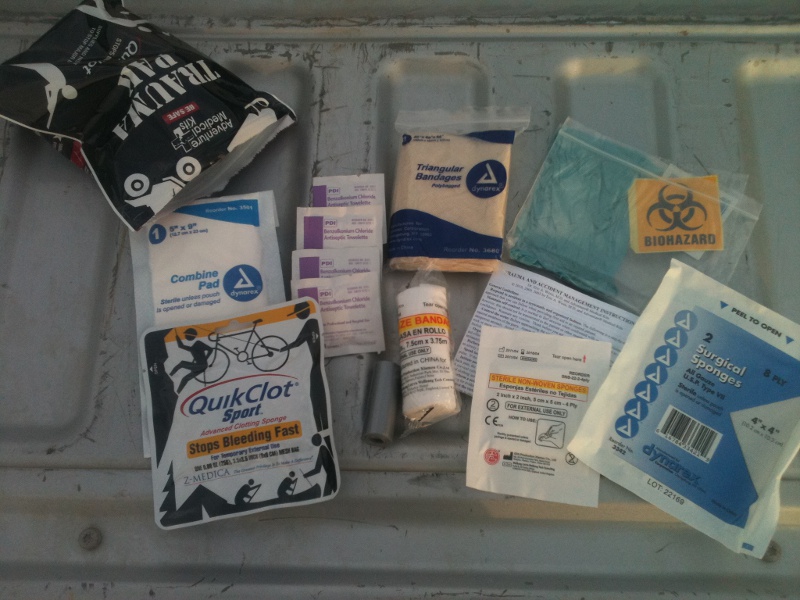 I’ve been a fan of QuikClot® for quite some time. As an agent for stemming massive hemorrhaging, there isn’t much better. Since it first came out, originally packaged in a granular form, QuikClot® has been a staple in blowout kits.
I’ve been a fan of QuikClot® for quite some time. As an agent for stemming massive hemorrhaging, there isn’t much better. Since it first came out, originally packaged in a granular form, QuikClot® has been a staple in blowout kits.
Your standard gunshot trauma kit or blowout kit generally consists of a clotting agent such as QuickClot, duct tape, various gauze wrappings and/or Israeli-style bandages, nitrile or latex gloves, duct tape, and often a tourniquet. Less often, aspiration needles are also included to relieve air building up in the abdominal cavity (tension pneumothorax) from a punctured lung.
In the past, blowout kits were often assembled from their individual components by first responders specifically trained in their use. More recently, pre-assembled kits such as Quick Clot’s Trauma Pak have been introduced to the market, though the need for quality training has not diminished.
Included in this kit are the bare essentials for treating a trauma injury until advanced emergency services can be reached, including severe hemorrhaging and sucking chest wounds, as well as many more minor injuries.
Each resealable pack contains:
- QuikClot® Sponge (25 gram)
- 2×2″ gauze
- 4×4″ gauze
- 3″ conforming gauze
- 5×9″ Trauma Pad
- Nitrile gloves
- 1 Duct Tape, 2″ x 26″;
- Triangular bandage
- Antiseptic wipes
- Plastic Ziploc trash bag and biohazard sticker
Replacement Quick Clot sponges are also readily available to allow you to easily restock your kit, or to add to your existing first aid kit.
None of the information presented here should be construed in any way to be for medical advice. Among The Leaves and it’s authors, editors, and owners cannot be held responsible for the use or misuse of any information presented here. You should seek out professional training and medical advice when putting together and learning how to use your first aid kit.
Day by Day
In other news, Tam is famous on the internet.


